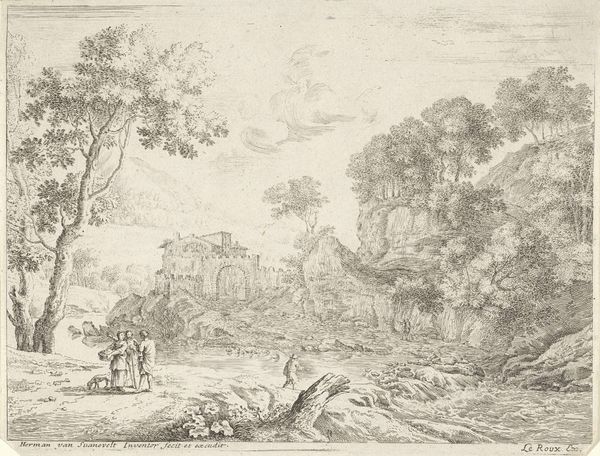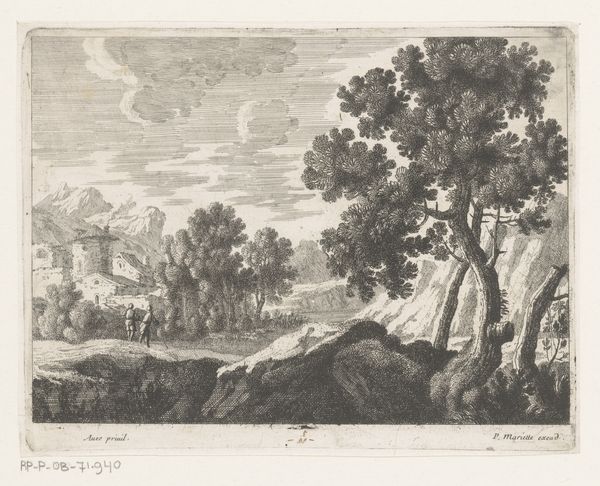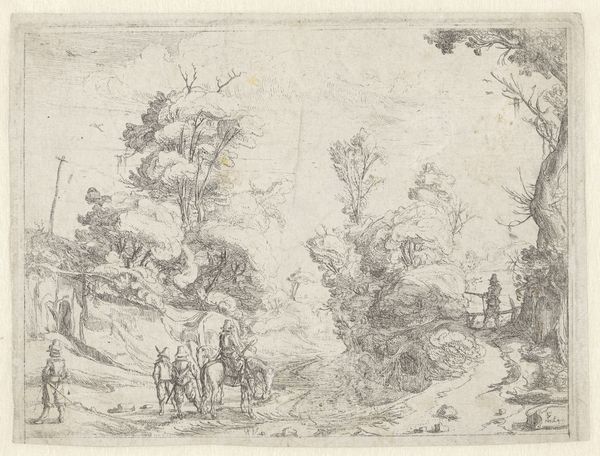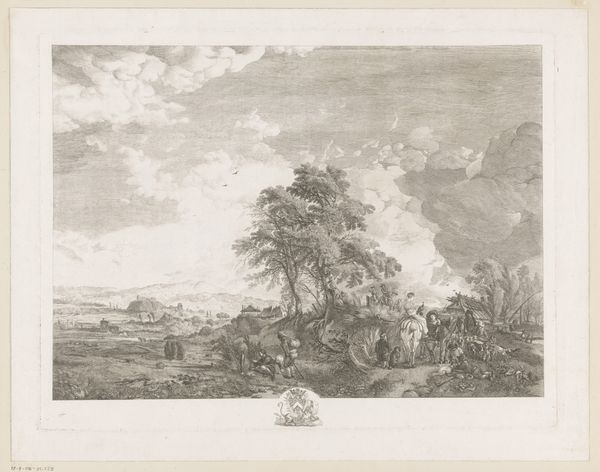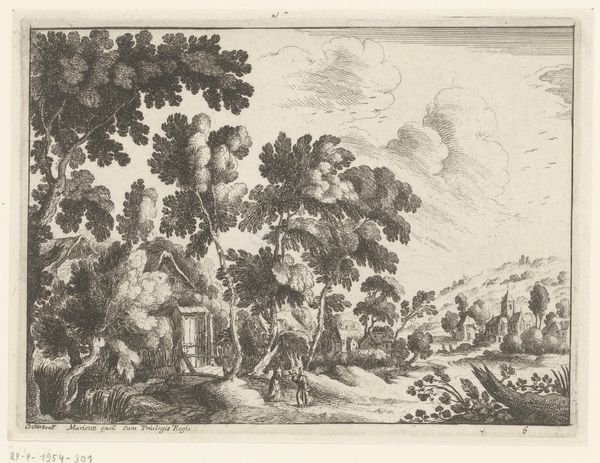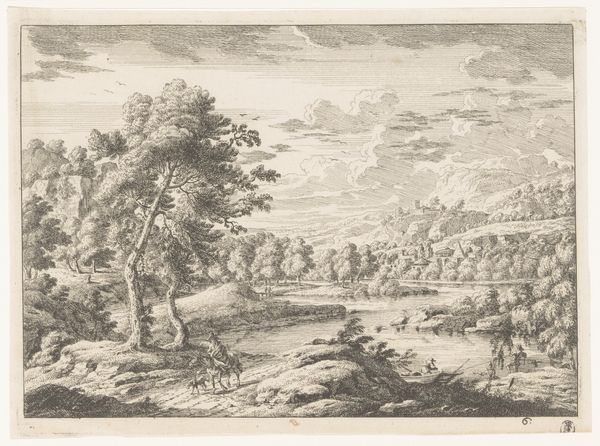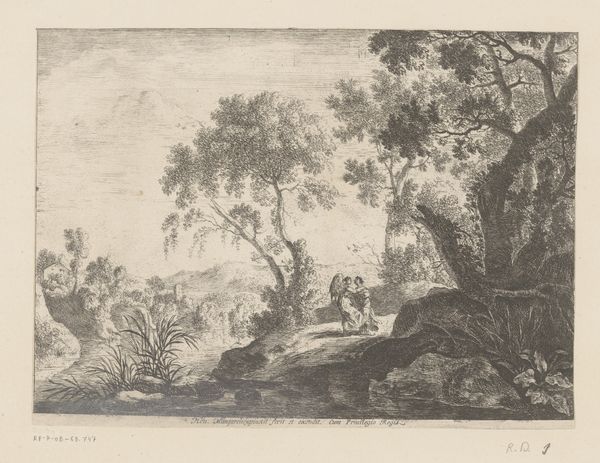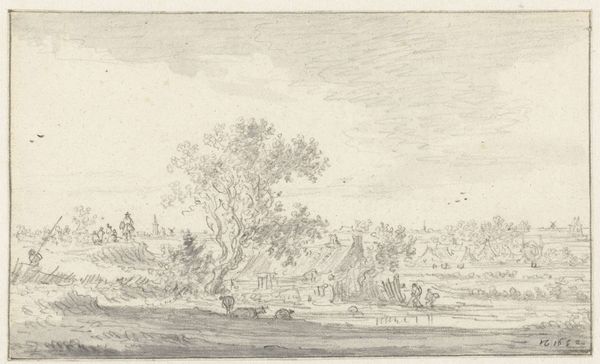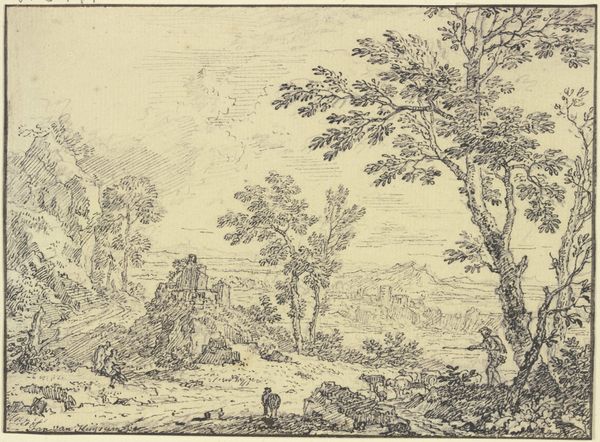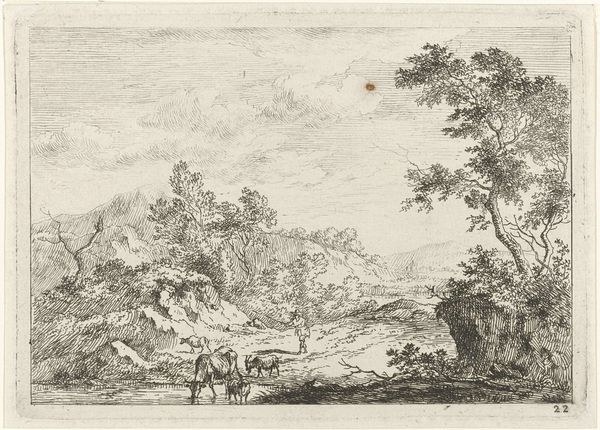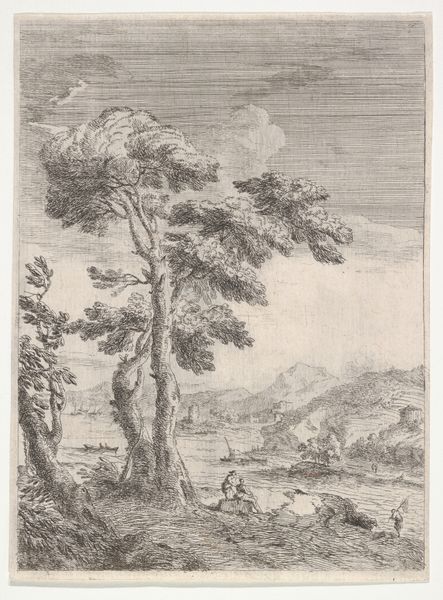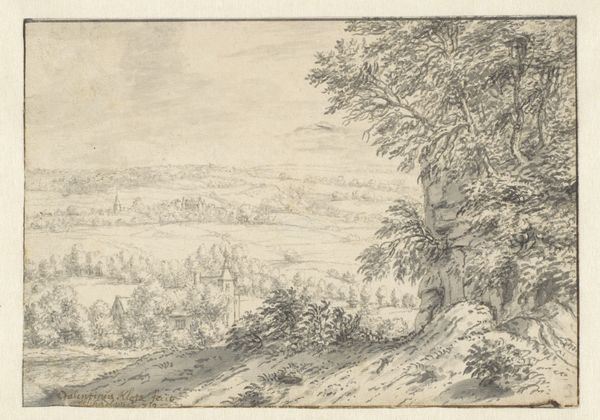
Italienische Landschaft, bewaldete Ebene, vorne zwei Wanderer, der linke beritten 1655
0:00
0:00
drawing, ink, graphite
#
drawing
#
baroque
#
landscape
#
figuration
#
ink
#
pencil drawing
#
graphite
Copyright: Public Domain
Editor: Here we have Adriaen van der Cabel's "Italian Landscape," a drawing from 1655 rendered in ink and graphite. I’m immediately struck by the vastness of the landscape, especially contrasted with the two tiny figures in the foreground. What’s your take on this piece? Curator: This landscape, typical of the Baroque period, isn’t just a pretty picture, it’s a commentary. The Italian landscape, for northern European artists like van der Cabel, often represented a space of both allure and unease. The vastness, as you noted, can be interpreted not just as scenic, but as an indication of power structures, of human insignificance in the face of a dominating landscape and possibly colonial ambitions. What do you notice about the figures themselves? Editor: I see two wanderers. One is on horseback, and they seem quite small compared to everything around them. The scene feels very… peaceful, almost lonely. Curator: Precisely. These figures, dwarfed by the landscape, invite us to consider their role, or lack thereof. Are they simply travelers? Or do they represent something more, perhaps the artist's own ambivalent relationship to a culture both admired and viewed from a distance? Think about how landscape art during this period could serve as a means of asserting dominance but also grappling with feelings of displacement. How does that reading sit with you? Editor: That’s interesting. It hadn't occurred to me that the landscape could represent power dynamics in that way. I was just thinking of it as a pretty picture! Curator: The 'pretty picture' aspect is, of course, there. But Baroque art often operates on multiple levels, engaging with political and social realities alongside aesthetic concerns. Looking at the level of detail given to nature and considering what we said, is it possible to understand it as an assertion? Editor: It definitely gives me a lot to think about, seeing how landscape can be so much more than just a background. Thanks! Curator: My pleasure. Recognizing those multiple layers—the aesthetic, the political, the personal—makes art history a truly enriching process.
Comments
No comments
Be the first to comment and join the conversation on the ultimate creative platform.
